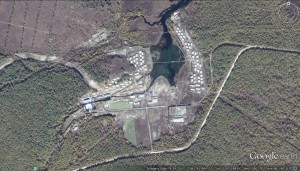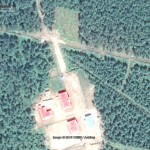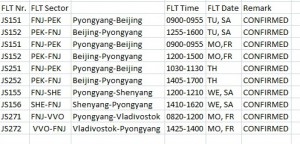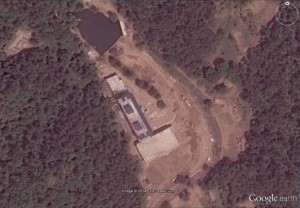UPDATE 6 (2015-7-23): KCNA issues another report on the Wonsan – Mt. Kumgang Tourist Zone:
The DPRK’s project for developing the Wonsan-Mt. Kumgang international tourist zone (ITZ) is attracting deeper international attention as the days go by.
In this regard, O Ung Gil, vice-chairman of the Wonsan-Mt. Kumgang ITZ Development Committee, told KCNA:
After the briefing on investment in the tourist zone held in Mt. Kumgang in May, the number of foreign companies and investors, who are willing to take part in the project, is on the increase.
Many companies in Asian and European countries showed a disposition to cooperate with the DPRK in the fields of designing, IT, building materials, foodstuffs, passenger service and so on. Some of them have already made contracts.
Many businessmen are hoping for the briefing on investment in the Wonsan-Mt. Kumgang ITZ to be held on a larger scale.
The construction for turning the Wonsan area into a world famous tourist destination, a model of city formation is being pushed forward. And a large number of local and foreign tourists have continued to visit the Mt. Kumgang area.
It has been also expected to let tourists enjoy various forms of tourism like mountain marathon and cycling.
The DPRK government has taken a series of measures to offer such preferences as recommending favorable projects ahead of others and discounting land rent to investors, who will agree upon the terms of advance investment and deferred compensation or the method of comprehensive development of land not later than 2017.
UPDATE 5 (2015-6-4): Institute for Far Eastern Studies (IFES) has issued a report on the conference. ‘Wonsan-Mt. Kumgang Tourist Region’ investment briefing held
The state-run Korean Central News Agency (KCNA) reported that the ‘Wonsan-Mt. Kumgang Tourist Region’ investment briefing was held at Mt. Kumgang on May 27, 2015.
According to the news agency, various parties were in attendance at the meeting, including embassy officials, the Wonsan-Mt. Kumgang Tourist Region Development Committee Chairman Yun Yong Sok, and a number of Chinese companies including the Dalian Branch of the World Overseas Korean International Trade Association, China’s Onyongbuksadal Group, Ltd., the Liaoning Province Hubei Store, the Liaoning Northeast Asia Association for Promoting Economic Culture, and China’s Hong Kong Global Industry Investment Group.
At the meeting Chairman Yun Yong Sok revealed, “In order to develop the Wonsan-Mt. Kumgang Tourist Region in a short period of time, the government is creating a prospective overall plan and completing detailed plans by district accordingly.” He also explained, “Before long this region will be transformed into a world-wide tourist hub and a sphere of economic cultural exchange.”
Regarding the briefing, Hong Kong Global Industry Investment Group, Ltd. manager Ho Tung remarked, “We found out about the impressive results they are achieving in economic growth and improving the people’s quality of life […] By cooperating with world-renowned investors, Mt. Kumgang will become a global tourist destination in the future.”
A video introducing the Wonsan-Mt. Kumgang Tourist Region was screened at the briefing, and various topics were discussed including ‘Regarding the Wonsan-Mt. Kumgang Tourist Region Development Prospects,’ ‘Regarding the Mt. Kumgang International Special Tourist Zone Prospects,’ ‘Regarding the Legal Environment of the Wonsan-Mt. Kumgang Tourist Region,’ and ‘Regarding the Lake Sijung Area Development Prospects.’
According to the KCNA, “The briefing, which captured the interest of overseas Korean businessmen and investors and professionals from various countries, served as an important opportunity to provide investment opportunities and deepen understanding regarding the development prospects of the Wonsan-Mt. Kumgang Tourist Region.”
The briefing session started on May 25, 2015 and lasted for six days on-site at Mt. Kumgang. Throughout the event participants toured the areas of Haegumgang, Kuryongyon, and Samilpo and also attended a business conference. Authorities used the ‘18th Pyongyang Spring International Product Exhibition’ on May 11, 2015 as an opportunity to also hold this investment briefing on the development of the Wonsan-Mt. Kumgang Tourist Region.
Prior to the briefing, O Ung Gil, general manager of the Wonsan Area Development Corporation, spoke about the upcoming event: “At the investment briefing, topics such as the favorability of the development zone (which has abundant tourist attractions), the legal environment, its current state, and the overall development plan will be revealed. […] All entrepreneurs and businessmen who have an interest in development in the region are welcome to attend.”
This tourist region was announced as a central-level ‘economic development zone’ (EDZ) on June 11, 2014 by ordinance of the Standing Committee of the Supreme People’s Assembly. It is part of the large-scale tourism belt that includes Wonsan district, the Masikryong Ski Resort, Ullim Falls, and the Sogwansa, Tongchon and Mt. Kumgang districts. In his 2015 New Year’s address, Kim Jong Un proclaimed to the people, “We need to multilaterally develop foreign economic relations and actively push forward the development of economic development zones like the Wonsan-Mt. Kumgang Tourist Region.”
UPDATE 4 (2015-6-3): The North Koreans produced this video of the event.
UPDATE 3 (2015-5-30): KCNA reports on some of the other participants leaving the event:
Foreign delegations left here on Saturday after taking part in the 2015 seminar on investment in Wonsan-Mt. Kumgang international tourist zone.
They included a delegation of the Dalian Branch of the World Trade Association of Overseas Koreans, a delegation of the Chinese Liaoning Beisida Group Co. Ltd., a delegation of the Chinese Liaoning Provincial Hubei Commerce Chamber and a delegation of the Liaoning Northeast Asia Society for Promoting Economy and Culture.
UPDATE 2 (2015-5-27): KCNA reports (again) on the briefing:
The 2015 Seminar on Investment in Wonsan-Mt. Kumgang International Tourist Zone took place in the Mt. Kumgang, on Wednesday.
Present at the briefing were members of the Committee for the Promotion of Development of Wonsan-Mt. Kumgang International Tourist Zone including its Chairman Yun Yong Sok, a delegation of the Dalian Branch of the World Trade Association of Overseas Koreans, a delegation of the Chinese Liaoning Beisida Group Co. Ltd., a delegation of the Chinese Liaoning Provincial Hubei Commerce Chamber, a delegation of the Liaoning Northeast Asia Society for Promoting Economy and Culture and a delegation of the Global Businessmen’s Group Co. Ltd. for Investment of Hong Kong, China, Swedish and other foreign guests and foreign embassy officials here.
Congratulatory speeches were made there.
Yun Yong Sok said that the DPRK government worked out a long-term master plan for developing the tourist zone in a brief span of time and is in the process of rounding off detailed plans for different areas. This zone will turn into a world tourist destination and a hub for economic and cultural exchanges before long, he added.
The general manager of the Global Businessmen’s Group Co. Ltd. for Investment of Hong Kong, China said that staying in the DPRK, he clearly learned that the Korean people have achieved successes in developing economy and improving the people’s living standard.
He expressed the belief that Mt. Kumgang will be developed into a world famous tourist destination thanks to the cooperation of famous investors of the world.
The participants watched a video introducing the Wonsan-Mt. Kumgang International Tourist Zone and listened to speeches introducing it.
UPDATE 1 (2015-5-27): KCNA reports on the briefing:
The 2015 Seminar on Investment in Wonsan-Mt. Kumgang International Tourist Zone took place at the Mt. Kumgang on May 27.
The seminar briefed on a plan for the development of tourist zone, its geographical conditions and legal guarantee for investment.
Ho Ji Hwan, head of the Yantai Branch of the World Trade Association of Overseas Koreans, told KCNA:
The scenery of the Wonsan-Mt. Kumgang international tourist zone is very beautiful. The investment in this zone will bring about good results. And it is expected to be a promising tourist destination. I know that there are some projects for its development and, therefore, will make a positive cooperation in materializing them.
Michael P. Spavor, consultant of the Paektu Culture Exchange in Britain, said:
The environment and conditions in the zone are great to be one of international tourist destinations. I looked round the Masikryong Ski Resort and Songdowon beach which are very excellent.
I am willing to take part in the work for attracting investment.
The Paektu Cultural Exchange website is here. Here is the Facebook Page.
ORIGINAL POST (2015-5-26): KCNA reports that foreign delegations have arrived to participate in the Wonsan-Kumgangsan Tourist Region investment briefing:
Foreign delegations arrived here on Monday to take part in the 2015 briefing on investment in Wonsan-Mt. Kumgang international tourist zone.
They included a delegation of the Dalian Branch of the World Trade Association of Overseas Koreans, a delegation of the Chinese Liaoning Beisida Group Co. Ltd., a delegation of the Chinese Liaoning Provincial Hubei Commerce Chamber, a delegation of the Liaoning Northeast Asia Society for Promoting Economy and Culture and a delegation of the Global Businessmen’s Group Co. Ltd. for Investment of Hong Kong, China.





